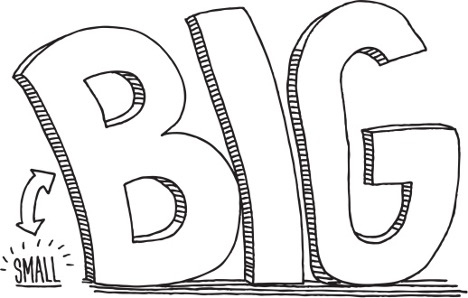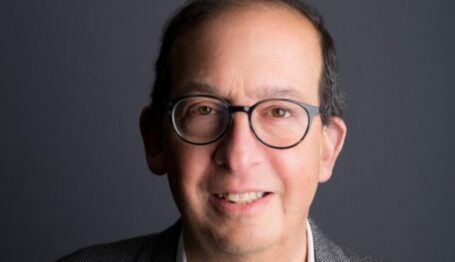Philanthropy
Big Charity Is Often No More Effective Than Big Government
Projects to address social problems do better when centered on an individual’s and community’s unique characteristics.


A few years ago, I was speaking to a pastor on the west coast, who shared how his church had been able to mobilize volunteers every summer for a “day of service” in the city. Over about 15 years, this event had grown from a few hundred to tens of thousands of participants. Perhaps even more impressively, it did a wonderful job bringing a variety of volunteers together across races, religions, and political parties. The city government loved it.
Over the same 15-year period that these volunteers were being mobilized, however, the city itself became a much worse place to live, especially for the poor. Violent crime, drug overdoses, homicides, theft, and even public defecation rose dramatically. Dozens of major retailers closed their locations there, as did countless small and medium-sized businesses.
Of course, it is unlikely that the mobilization of large groups of middle-class volunteers caused the standard of living in the city to drop so far so fast. But it certainly feels fair to say that this annual city-wide expression of suburban goodwill hasn’t had a meaningfully positive impact on these troubling trends. Some might even call it a waste of time.
Misguided Missions?
For decades, conservatives have expressed completely justifiable skepticism of government’s capacity—especially at the federal level—to effectively address a myriad of social problems. They have rightly pointed out the perverse incentives created by many social-service programs that are much more effective at providing jobs for helping professionals than they are at catalyzing upward mobility or other improvements among the people they supposedly serve. As my boss Bob Woodson likes to point out, most government-run social-service programs make the poor a commodity.
But while privately funded charities may often be able to distribute goods and provide services more efficiently and effectively than government agencies, they are not automatically immune to the disempowering, paternalistic, and dehumanizing assumptions that make so many government programs so harmful to those they are designed to help. In short, private funding alone—even when it comes with “rigorous accountability”—does not automatically make an intervention more effective at actually improving people’s lives.
I was asked once to consult for a sincere philanthropist on the board of a very well-funded nonprofit that provided enrichment activities for low-income high-schoolers and helped them with college applications. This organization diligently measured its success by the college-admission rates of its program participants, and this gentleman was very proud of its results. But when I asked him about the college persistence and graduation rates among participants, his face fell. He admitted that they did not track this information, but that anecdotally he knew a lot of the participants dropped out of college. When I asked if they had investigated partnering with any other organization or effort that might help improve this situation, he shook his head and said that the board wanted to guard against mission drift.
It is certainly possible that a semester or two of college might still have a positive effect on a low-income student’s life. But it should also be obvious that such a student leaving college without a degree would have certainly given up other opportunities, might have accrued student debt, and might feel unnecessarily defeated. In short, he also might be worse off than if he had not gone at all. The most well intended charitable efforts—particularly when led by those outside a particular community—can make lives worse when they focus too much on what they want to provide and not enough on the holistic situation of the individuals with whose lives they are interfering.
When the mission of a for-profit enterprise is not aligned with what consumers want, it generally goes out of business. But many successful charities escape these market forces with aggressive PR campaigns to both funders and program participants that promise tremendous positive impact. No one would support a charity whose mission was “to get more low-income kids into college even if it makes their lives worse.” But if paying attention to college persistence and graduation rates—not to mention overall satisfaction with the experience, job placement, lifetime earnings and so on—counts as “mission drift,” then maybe those last seven words should be added for the sake of honesty.
Incorrect Assumptions and Incomplete Knowledge
In his 2014 essay “Stop Trying to Save the World,” Michael Hobbes runs through dozens of examples of well-meaning attempts at international aid that ended up making the target communities worse. Although the details of their failures vary widely, the overall cause of this malpractice was that those inflicting their help didn’t understand the local particularities and often rushed to scale ideas that had worked (or seemed to work) in other places. He explains why unintended consequences will always abound with outsider aid:
We all understand that every ecosystem, each forest floor or coral reef, is the result of millions of interactions between its constituent parts, a balance of all the aggregated adaptations of plants and animals to their climate and each other. Adding a non-native species, or removing one that has always been there, changes these relationships in ways that are too intertwined and complicated to predict.
Exactly the same principles apply to neighborhoods in the United States. The fact that in some contexts, larger data sets yield better insights fuels the impulse to deal with human beings and human communities—especially the poor—as standardized, interchangeable units. If helping one inner-city high-school student edit his college-application essays helps him succeed, then let’s do the same with a thousand. Never mind that every one of those thousand students has individual dreams, strengths, desires, and circumstances that are just as unique as those of their middle-class and wealthy counterparts.
But another part of the problem is the assumption that poverty and other social problems are driven primarily by barriers to goods and services, rather than barriers to skill development, social capital, character formation, and opportunity. Big Charity can often distribute some kinds of goods and services well, and sometimes it should. But large, outsider-run organizations are often poorly suited to removing barriers to the latter list, because those barriers are part of exceedingly complicated social ecosystems that vary widely from city to city and even from block to block.
There is the conceit that somehow being middle or upper class automatically confers some sort of special wisdom about how to rise out of poverty. But in reality, it takes a very different skill set to lift oneself out of poverty—especially multigenerational poverty—than it does to more or less match the education and income level of your parents. That’s not an indictment of anyone’s “privilege;” it’s just reality. Getting a master’s in clinical social work or any other helping profession—or incidentally having a “passion” to make a difference—does not automatically impute the courage, impulse control, perseverance, and other heroic virtues needed to accomplish what no one else in your family has ever done.
The Better Way
Most “days of service” and other large, charitable demonstrations of good will are not necessarily harmful. Some are even able to achieve positive good. But most are primarily centered on the needs and desires of the volunteers and donors, not the people the program supposedly serves. We should just be very clear that any outsider-led effort—no matter how it is funded—is highly unlikely to meaningfully disrupt multigenerational poverty or other endemic social problems.
Those problems can be effectively addressed, however, and our country has a long history of doing so. The Underground Railroad was not scalable the way a fast-food restaurant can be franchised, nor were its full results accurately measurable on a census table. It was a loose network of hyper-local efforts adapted for each community’s circumstances. And its impact was far greater than the untold thousands it rescued from bondage. Each newly liberated individual became a force for abolition and witness to the possibility of freedom.
That approach—centered on the individual’s and community’s unique characteristics—is what holds the promise for real impact today. And it is where donors and volunteers who desire to achieve real impact should invest their resources.
This article first appeared in the Giving Review on July 1, 2024.



